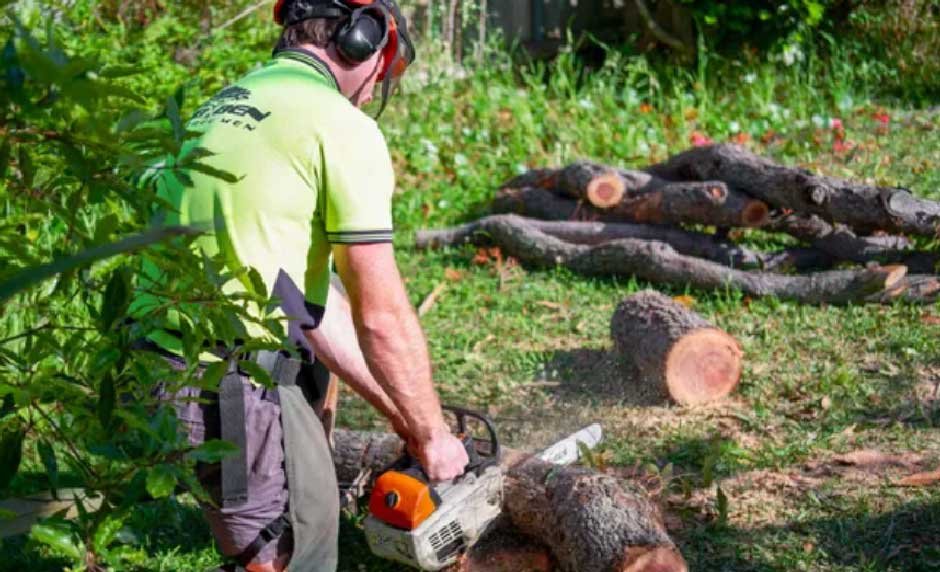Skip to the good bit
ToggleTrees are an essential part of your landscape, offering shade, beauty, and even boosting property value. But sometimes, trees can become more of a hazard than an asset—especially when they’re damaged, diseased, or structurally compromised. Knowing the signs of a dangerous tree could save you thousands in repairs, or more importantly, protect your family and property from serious harm.
This article will walk you through how to identify the red flags of a hazardous tree. If you notice any of these warning signs, it’s best to contact Tree Service Atlanta, GA For Emergency Response to assess the situation and provide expert advice or emergency removal.
1. Leaning Trunks
One of the most obvious signs your tree may be in trouble is a trunk that leans more than usual. While some trees grow naturally at an angle, a sudden or increasing lean is often a sign of structural instability.
Look for:
- A lean greater than 15 degrees from vertical
- Uprooted or exposed roots on one side
- Cracking or lifting of the soil at the base of the tree
These are signs that the tree may be on the verge of falling and should be evaluated by a professional right away. In cases like this, it’s crucial to contact a service as soon as possible.
2. Dead or Falling Branches
Dead branches can fall at any time, especially during storms or high winds. They often break off without warning, which poses a serious risk to people, vehicles, roofs, or power lines.
Signs to look for:
- Branches with no leaves in the growing season
- Brittle, dry, or cracked limbs
- Large branches hanging loosely in the canopy
If more than 50% of the tree’s crown is dead or dying, it might be time for removal. Even if the rest of the tree seems healthy, falling branches are a clear hazard.
3. Hollow or Decaying Areas
Trees can look solid from the outside but be hollow inside: literally rotting from the inside out. This internal decay can significantly weaken the structure, making the tree prone to collapse.
Common indicators include:
- Fungal growth, like mushrooms, at the base or on the trunk
- Cavities or large holes in the trunk
- Crumbly, soft wood or sawdust-like material around the base
Hollow trunks are especially dangerous because they often fail without any external warning signs. If you suspect internal decay, it’s time to reach out to a professional tree service Atlanta, GA locals trust to take a look.
4. Cracks or Splits in the Trunk
Cracks and splits can occur naturally as a tree grows, but deep or expanding fissures are a red flag. These weak spots compromise the tree’s ability to withstand heavy wind or storms and may eventually cause it to split apart. In many cases, this type of damage is irreversible and could require immediate removal for safety.
Look for:
- Deep vertical cracks in the trunk or large limbs
- Bark peeling away or missing in large sections
- Cracks near branch unions, especially where heavy limbs meet the trunk
5. Root Damage
Roots are the foundation of any tree, and damage to them—whether from construction, soil compaction, or disease—can lead to instability or death. Root damage is tough to spot without a trained eye. If you’ve recently had landscaping, paving, or utility work near your trees, it’s wise to have a professional check for root impact.
You might notice:
- Fungus growing around the base (a sign of rot)
- Visible roots that appear broken, soft, or decayed
- A noticeable lean or thinning canopy
6. Pest or Disease Infestation
Infestations and diseases can slowly kill a tree from the inside out. Some pests, like borers or termites, weaken wood structures. Others may spread fungal diseases that make trees brittle and prone to collapse. A certified arborist can help diagnose the issue and determine whether the tree can be treated or should be removed.
Common warning signs include:
- Unusual leaf discoloration or early leaf drop
- Small holes in the bark (exit holes from boring insects)
- White, black, or orange fungal growth
- Oozing sap or discolored bark
When in Doubt, Call the Experts
It’s not always easy to tell whether a tree is truly hazardous or just showing natural signs of age. That’s why it’s best to have a certified arborist assess any suspicious trees on your property. Don’t take chances when it comes to your safety.
If you see any of the warning signs listed above—or you’re just not sure—a trusted tree service in Atlanta, GA can provide a professional assessment. And if you’re dealing with storm damage or a sudden tree fall, contact Tree Service Atlanta, GA For Emergency Response immediately to prevent further risk.







